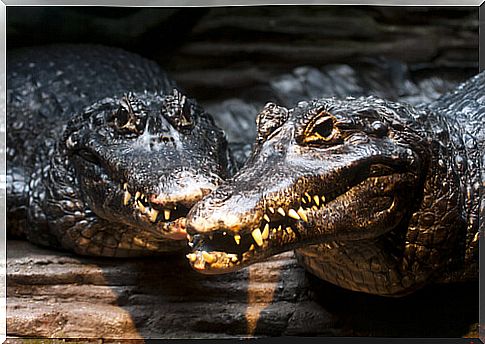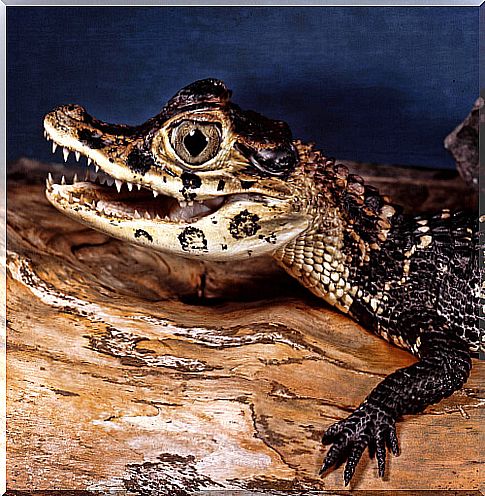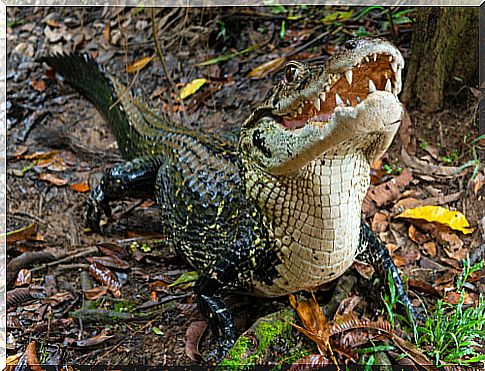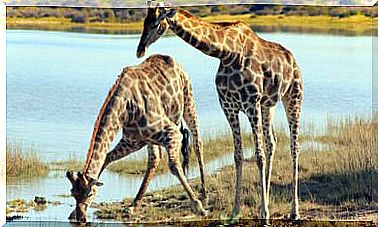The Black Caiman: Information And Characteristics

The black caiman, scientifically known as Melanosuchus niger, belongs to the alligator family, typical of the American continent. Specifically, this species is the one with the largest size, and it can reach six meters in length.
Morphologically, the black caiman has four or five rows of cervical bone plates along with a pair of rows of very pronounced dorsal scales and three ridges, one double and one simple, in the caudal part. Its tonality is mostly black except for a creamy ventral region and its yellowish head. In addition, it has bands of a lighter color on the flanks.
Reproduction, feeding and behavior of the black caiman
During the dry season, a period that runs from September to December, the female is dedicated to building her nest in a kind of mound. In it it lays the eggs that incubate for two or three months depending on the temperature, although some studies relate hatching to the arrival of the rains.

Clutches generally have 50 or 60 eggs, of which half die in the first few weeks. Young that do survive tend to stay together, despite coming from different clutches, to be protected by their parent. For their part, males lack an active role in reproduction, beyond the copulation phase.
The feeding of the black caiman coincides with that carried out by the common caiman because they both share the same type of habitat. Thus, fish such as piranhas or the so-called catfish, together with mollusks and small terrestrial or aquatic vertebrates, constitute the main energy sources of adult reptiles. In the case of juveniles, insects and crustaceans are the main food resource.
This animal is defined by its nocturnal habits and its patience when hunting, both in terrestrial and aquatic environments. In order to eat their prey, they usually drown them and, once they die, tear them to pieces. Despite their apparent ferocity, they are not among the most aggressive reptiles and the number of attacks on humans is low.
The marked tropical seasonality influences the behavior of these animals. During the months of May to July, with floods, they tend to be more distributed with respect to their peers. However, throughout the dry season they remain grouped in aquatic reserves, be they rivers or lakes, which guarantees them a permanent source of water.

The black caiman is characterized by emitting rumbling sounds for communication with its congeners. However, the number of vocalizations is less than that produced by other types of reptiles.
Habitat and conservation status
This species is distributed throughout the Amazon of Colombia, Peru, Ecuador, Bolivia and Brazil, normally at an altitude that does not exceed 250 meters. In general, they occupy calm and permanent water courses; avoid brackish waters.
Despite the fact that a few years ago the number of black alligators was abundant, the poaching boom from the middle of the 20th century has wiped out a large number of individuals. The demand for black leather is its main threat; however, deforestation and swamp devastation is wiping out much of the world’s population.
Currently, the International Union for Conservation of Nature (IUCN) considers it as a species of least concern regarding the risk of its conservation status. Reaching a more critical level depends directly on anthropic action, hence the important mission that South American authorities in particular, and international authorities in general, must carry out in the control of illegal activities.







